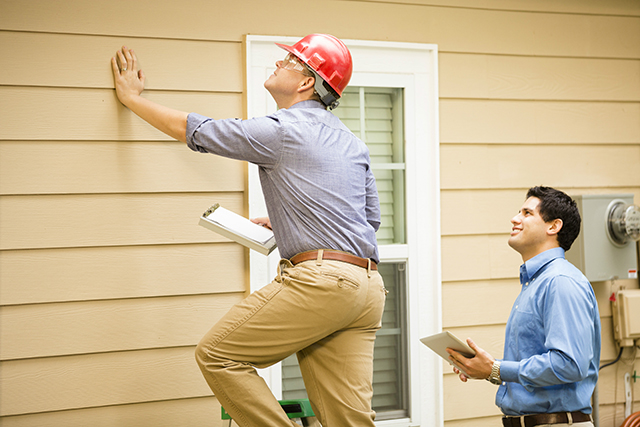If and when planning to purchase a commercial property, the question often arises, ‘How Can I Find a Reliable and Competent Building Inspectors Melbourne for Conducting a Commercial Building Inspection?’ While one could easily write an eBook on this subject matter, this article offers several tips to help you hire a reliable and competent inspector for the purpose of obtaining a thorough and diligent commercial building inspection. So without further ado, let me begin by telling you ‘What Not to Do’.

Never hire a commercial building inspector who was referred to you by the real estate agent or any other outside party who has a vested interest in and stands to gain from the sale of the property.
Although this statement goes without saying, it’s worth mentioning simply because many of those looking to purchase commercial real estate believe it is standard protocol to rely upon the realtor’s recommendation for hiring an inspector. In reality, this practice poses a conflict of interest that can have dire consequences for the party purchasing the property. Unfortunately, real estate agents who knowingly partake in this practice along with inspectors who continue to burn the candle from both ends know exactly what they’re doing and how to get away with it. While there may be a few exceptions to what I am telling you, I can assure you that the majority of inspectors who rely heavily upon referrals from real estate agents for their business are not going to rock the boat by disclosing any information to the client during the course of an inspection that may later serve to jeopardize their relationship with the broker or real estate company who referred them in the first place.
Never hire a Home Inspector to conduct a Commercial Property Inspection.
As for hiring a home inspector to conduct a commercial building inspection, suffice it to say that in most cases, conducting a commercial building inspection is altogether different from performing a home inspection for reasons too numerous to list in this article. However, the proliferation of home inspectors over the past twenty years (everyone wants to be one, especially in those States where home inspection licensing has become mandatory making it relatively easy for anyone to become licensed), hasn’t helped either as this has spawned an increasing number of home inspectors who are still unable to properly inspect a home, much less a commercial building, even if their life depended upon it. Moreover, given the number of significant and distinct differences between residential and commercial property, while experience in inspecting homes may well serve as a prerequisite, it is by no means a substitute for the vast amount of knowledge and experience required and yet to be learned by most home inspectors before they can even begin thinking about conducting a diligent and thorough building inspection.
Aside from ‘What Not to Do’, there are also other criteria you need to consider or at least be aware of in your quest to hire a reliable and competent commercial building inspector. namely:
Know the fundamental difference between a Commercial Building Inspection and a Property Condition Assessment (PCA).
Although this topic warrants a separate discussion, it’s important to note that the terms ‘PCA’ and ‘Commercial Building Inspection’ are often used interchangeably in the commercial sector. This in turn has resulted in a lot of confusion not only among real estate investors and others looking to purchase commercial property but real estate agents as well who more often than not simply do not know much less understand the difference. To make matters worse, the ASTM (American Society of Testing Materials) has also gotten in on the act by promulgating their ASTM Standards for Conducting a Baseline PCA. What this means is that since they happen to be a nationally recognized organization in the construction industry, in certain respects they’re similar to the AMA in the medical profession meaning anything and everything they write on a particular subject happens to bear a lot of weight. The problem arises in that the Standards for Conducting a Baseline PCA are often misunderstood by many in the profession and seldom if ever read by those buying and selling real estate.
To simplify things, all one really has to know is that the difference between a commercial building inspection and a Baseline PCA is like night and day since the later can be performed in a fraction of the time it takes to conduct a thorough and diligent commercial building inspection. The reasoning behind this is pure and simple in that a PCA is essentially a cursory walk-through of the property that relies heavily upon second hand information obtained through interviews and documentation (that may/may not be readily available let alone veritable) normally obtained through the owner and/or occupants of the property. Hence, my advice to anyone who is seriously considering having a PCA in deciding whether or not to purchase a commercial property is to forget it since in most cases a PCA is a total waste of time and money in providing information contained in a property condition report that isn’t worth the paper it’s printed on.
Try to obtain as much information as you can about the company and the inspector beforehand
This is another statement that goes without saying but I mention it because many people feel uncomfortable in asking questions of this nature especially when speaking with someone they don’t already know. However, if you reflect upon what I’ve just said for a moment, the fact you don’t know anything about the company or the inspector should be reason enough to ask all the questions you can to solicit answers without being embarrassed.
Be sure to ask the company or building inspector for references
Last but not least, do not be embarrassed to ask for bonafide references regarding recent clients for whom they have conducted similar commercial building inspections. If the company or inspector is reputable and if they have confidence in the service they provide, they normally will not have any reservations whatsoever in providing you with this information.
My next article will provide tips as to what questions you need to ask and what else you need to be aware of in looking to hire a reliable and competent commercial building inspector.
The author is an independent and accomplished commercial building inspector and consultant of over twenty-five years, providing commercial property/building inspections in the city of Chicago as well as surrounding and outlaying Illinois suburbs.
Aside from performing an occasional home inspection now and then, the author specializes in conducting commercial property inspections of both small and large office, warehouse, and apartment buildings including retail store outlets and strip shopping centers.
For more information, visit the author’s website at: http://www.inspectabuilding.com
Article Source: http://EzineArticles.com/expert/Martin_Potokar/145512
Article Source: http://EzineArticles.com/5554775

